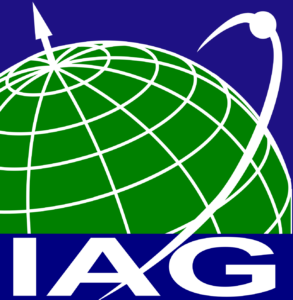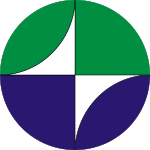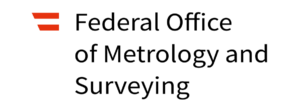Working Groups of Sub-Commission 1.2
JWG 1.2.1: GNSS scale information for global reference frames (joint with IGS)
Chair: Paul Rebishung (France)
Vice-Chair: Tom Herring (USA)
Terms of Reference
to be completed!
Objectives
Main objectives:
- Establish an inventory of the efforts by different groups to determine the terrestrial scale with GNSS.
- Review the consistency of GNSS-based scale and scale rate estimates across research groups, constellations and frequency combinations, as well as with estimates from other space geodetic techniques.
- Investigate potential systematic errors in GNSS-based scale and scale rate determination.
- Provide recommendations and strategies to improve the scale of the IGS contribution to the next ITRF releases.
- Investigate methods for in-situ calibrations of the phase response of GNSS antenna.
Members
- Paul Rebischung (France); Chair
- Tom Herring (USA); Vice-Chair
Corresponding Members
- Georgios Vergos (Greece), representative of IFGS
JWG 1.2.4: Evaluation of the terrestrial reference frames (joint with IERS)
Chair: Guilhem Moreaux (France)
Vice-Chair: Andreja Susnik (UK)
Terms of Reference
Periodically, the International Terrestrial Reference System (ITRS) combination centres (CCs) of the International Earth Rotation and Reference Systems Service (IERS), namely the Institut National de l’Information Géographique et Forestière (IGN, France), the Deutsches Geodätisches Forschungsinstitut at the Technische Universität München (DGFI-TUM, Germany) and the Jet Propulsion Laboratory, (JPL, USA), compute new realizations of the ITRS. The official realization is named International Terrestrial Reference Frame (ITRF) and is published by the IERS ITRS product centre at IGN. DGFI-TUM and JPL compute their own ITRS realizations named DTRF and JTRF, respectively. These global TRF solutions comprise accurate station positions and are obtained by a combination of individual contributions of the four space geodetic techniques DORIS, GNSS, SLR and VLBI. All three solutions are based on identical input data of the IAG technique Services, namely the IDS, IGS, ILRS, and IVS. Since each IERS ITRS CC follows its own combination strategy, each solution comprises a solution-specific array of products (e.g., station positions, velocities, post-seismic deformation models, non-tidal loading correction time series, periodic corrections). In addition to the above mentioned ITRS realizations, global techniquespecific ITRF solutions as well as regional densifications of the ITRF are computed by different institutions.
The ITRF is used daily by a huge number of individuals and organizations in applications such as surveying, aircraft navigation, responding to disaster emergency etc. Furthermore, the ITRF provides the fundamental basis needed for a broad variety of Earth system research applications. Examples are the determination, monitoring, and interpretation of global change phenomena on different temporal and spatial time scales (i.e. sea-level rise and ice sheet melting), of Earth Orientation and Rotation, relativity, lunar science, as well as the calibration and evaluation of ocean and ice altimetry missions. Furthermore, it is the basis for the understanding of dynamics and modeling of satellite orbits and can be used in scientific research such as plate tectonics and crustal deformation monitoring and static and time-varying gravity field modeling. In short, the ITRF serves as the backbone in geosciences.
This JWG aims at complementing the evaluation of the ITRS realizations by the IERS ITRS product center with a special focus on the intercomparison of different global TRF solutions. The assessment aims at investigating conceptual differences of the three ITRS realizations with previous realizations based on user and application requirements important for, e.g., the precise orbit determination (POD) of low-, medium- and high-Earth-orbiting satellites and the estimation of Earth Orientation Parameters (EOPs) as well as the (mean) regional/global sea level rise.
Objectives
Main objectives:
- Intercomparison of the combination strategies followed by the IERS ITRS CCs.
- Assessment/quantification of station position time series differences between the ITRS realizations and w.r.t. geophysical models (e.g., loading displacements).
- Promotion and development of alternative rigorous (and independent) methods for the intercomparison of global TRF solutions (e.g., POD of low-, medium- and high-Earth-orbiting satellites).
- Explore methods and procedures for the quality control of TRF solutions.
Members
- Guilhem Moreaux (France); Chair
- Andreja Susnik (UK); Vice-Chair
- Dimitrios Ampatzidis (Greece)
- Peter Clarke (UK)
- Rolf Dach (Switzerland)
- Linda Geisser (Switzerland)
- Frank Lemoine (USA)
- Anton Reinhold (Germany)
- Sergei Rudenko (Germany)
- Erik Schönemann (ESA)
- Patrick Schreiner (Germany)
- Daniela Thaller (Germany)



